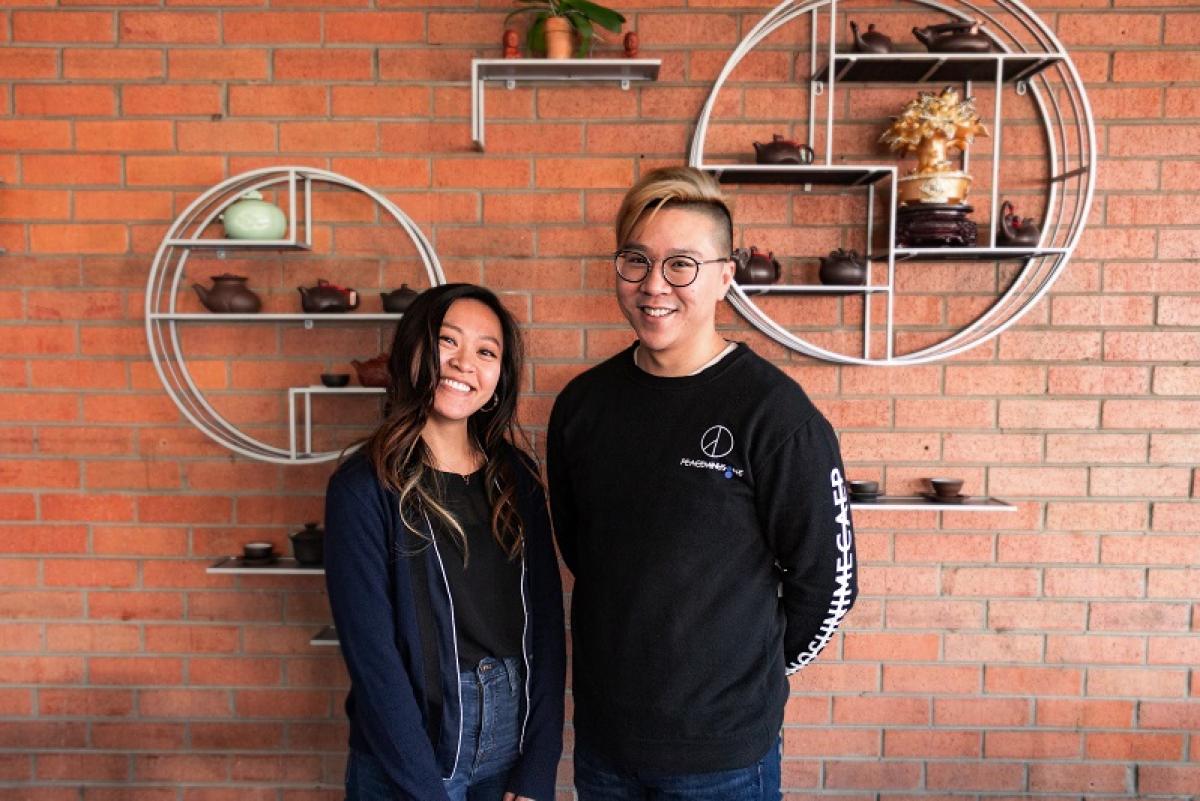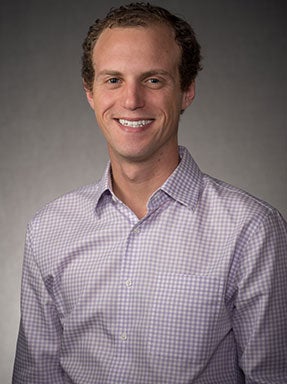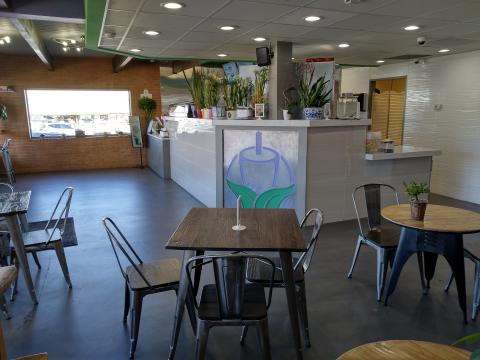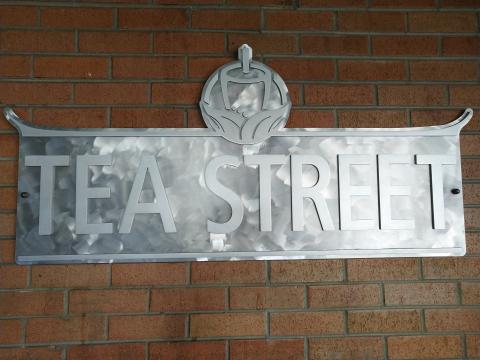Bubble Tea Business Blends Alumna's Experiences

Victoria Lam and her brother, Patrick, are co-founders and co-owners of Tea Street.
For newcomers, drinking bubble tea can be considered an experience. The deep oranges and perky pink colors are eye catching and its exotic flavors, like taro and wintermelon, can be surprising. And the extra-wide, neon-colored straws are a fun way to catch the chewy gobs of tapioca (known as “boba”) that swim at the bottom of the cup.
For Victoria Lam, an alumna of the University of Denver’s Daniels College of Business, the Taiwanese beverage tastes like her childhood.
“Bubble tea places were some of the few places we felt it was OK to be Asian-American and not have a clear sense of our identity,” Lam says of her blended upbringing: traditional Chinese at home, American at school. “There were a lot more people who were like us, and we felt like this was a space for us.”
Just last year, Lam (BSBA ’14, MBA ’19) put her business education to the test when she joined her brother, Patrick, to open Tea Street at the corner of Mississippi Avenue and Colorado Boulevard in Denver.
The venture represents the culmination of her childhood culture and a lifetime in the food business.
“In our household, we drank tea all the time, with every meal,” she says. “It’s important to us [at Tea Street] that whatever we’re serving we would want to drink all the time. We believe in quality, [especially] because my father has a chef’s background.”
Lam grew up as much in the Centennial, Colorado, area as she did in her father’s old Chinese restaurant, lingering, watching the hard work her parents — refugees from Vietnam but of Chinese descent — put in.
When the time came to go to college, Lam knew she wanted to work in international business. She picked up a second major in Chinese and, as a Cherrington Global Scholar, studied abroad in Shanghai.
“It really helped me understand, ‘Oh wow, this is exciting to me, and I never knew this side of my culture,’” she says. “It made me feel more like myself, discovering a different side of it.”
Upon graduation, Lam went into finance, working for Goldman Sachs in New York City and Salt Lake City before returning home and securing a job at FirstBank. She returned to DU for an MBA and decided to leave her job as a commercial lender to start Tea Street.
In part, Lam says, she was tapping into Colorado’s growing market for bubble tea. But she also saw a need for natural, fresh ingredients. Where many other tea shops use powders and artificial syrups, Tea Street imports loose-leaf tea from Taiwan and uses fresh fruit and scratch-made syrups.
“I taste test the teas every single day, and I wouldn’t want to drink something that’s processed, awfully sugary or something that’s not authentic,” Lam says. “It’s a part of my own integrity but also just creating a really great drinking experience for whoever comes through.”
Running a tea shop has been a dramatic departure from her previous career in finance, Lam says. Taking classes at DU while getting the business off the ground helped ease the transition, however.
“A lot of the information I was learning there I directly applied here trying to build this business,” she says. “You learn a lot about business development and analytic strategy, and you actually get to use the skills to reach customers and get people to know and understand my brand. I definitely feel like I’ve learned a whole new skill set this year.”
Now in its second year, Tea Street is working on expanding its menu. Lam plans to introduce special seasonal flavors at traditional tea ceremonies while also offering small bites. She’s also introducing a full slate of community events to create a comfortable, easy space for people from all backgrounds.
Above all, Lam keeps her eyes on a carefully crafted logo: leaves, boba and a straw in the shape of Taiwan’s tallest building, all of which sit upon a traditional Chinese signboard. The message is unmistakable: Classic supports the contemporary.
“I’m starting to see the community I want coming to fruition,” Lam says. “That’s showing me that what I’m doing is working.”










